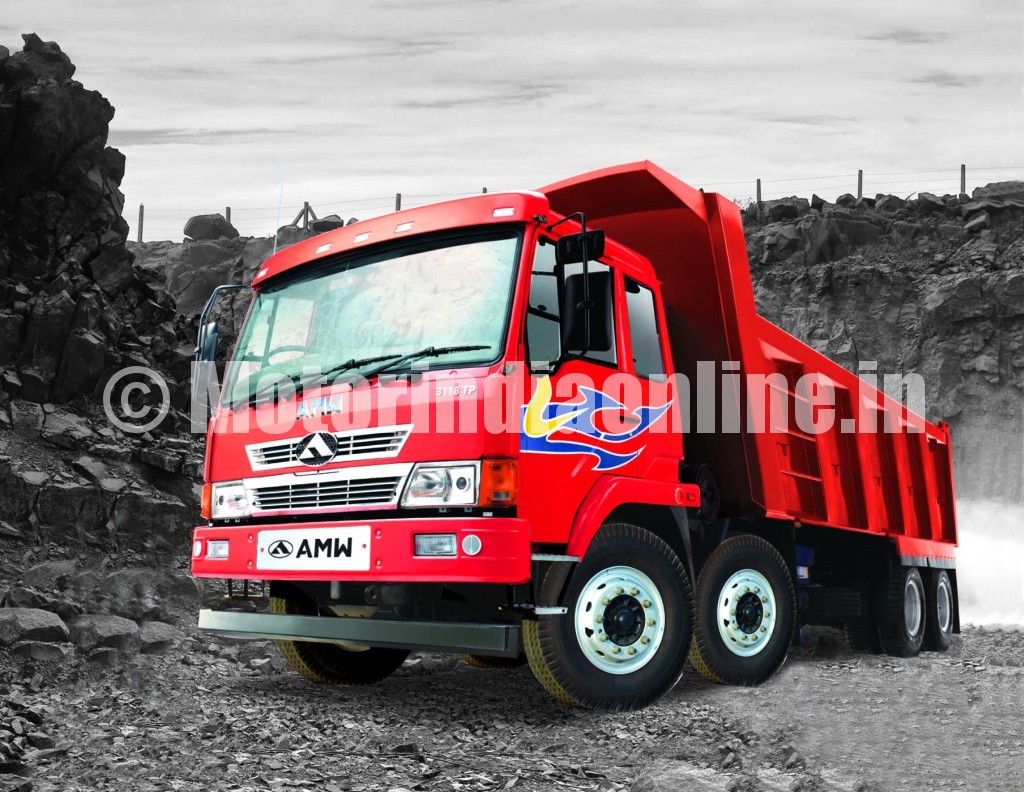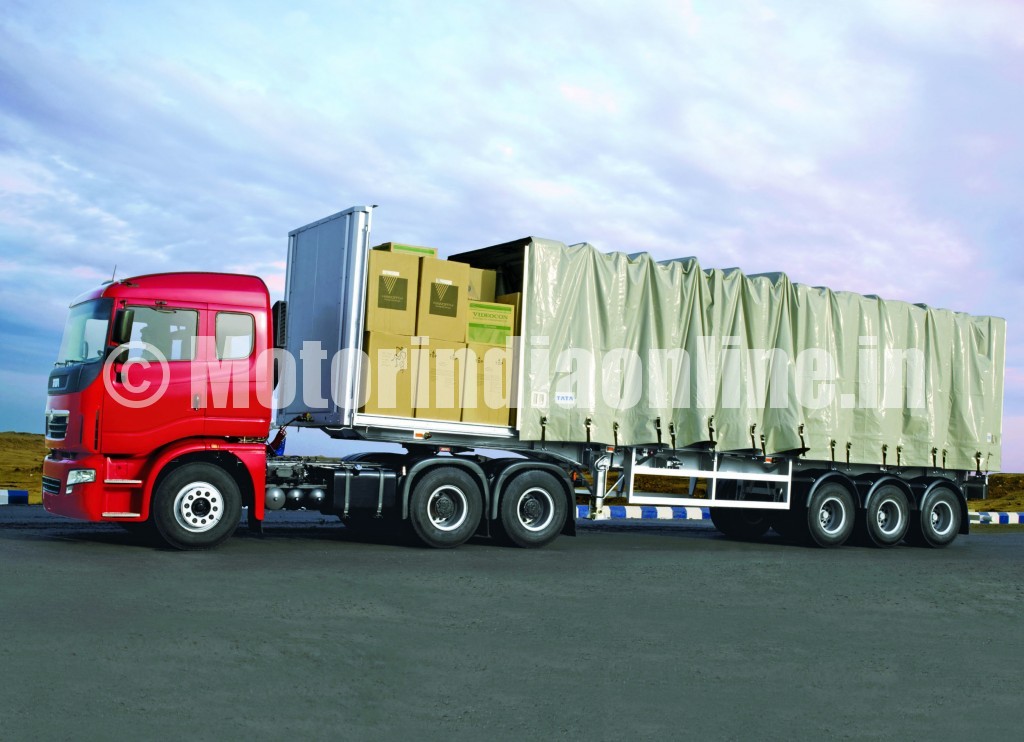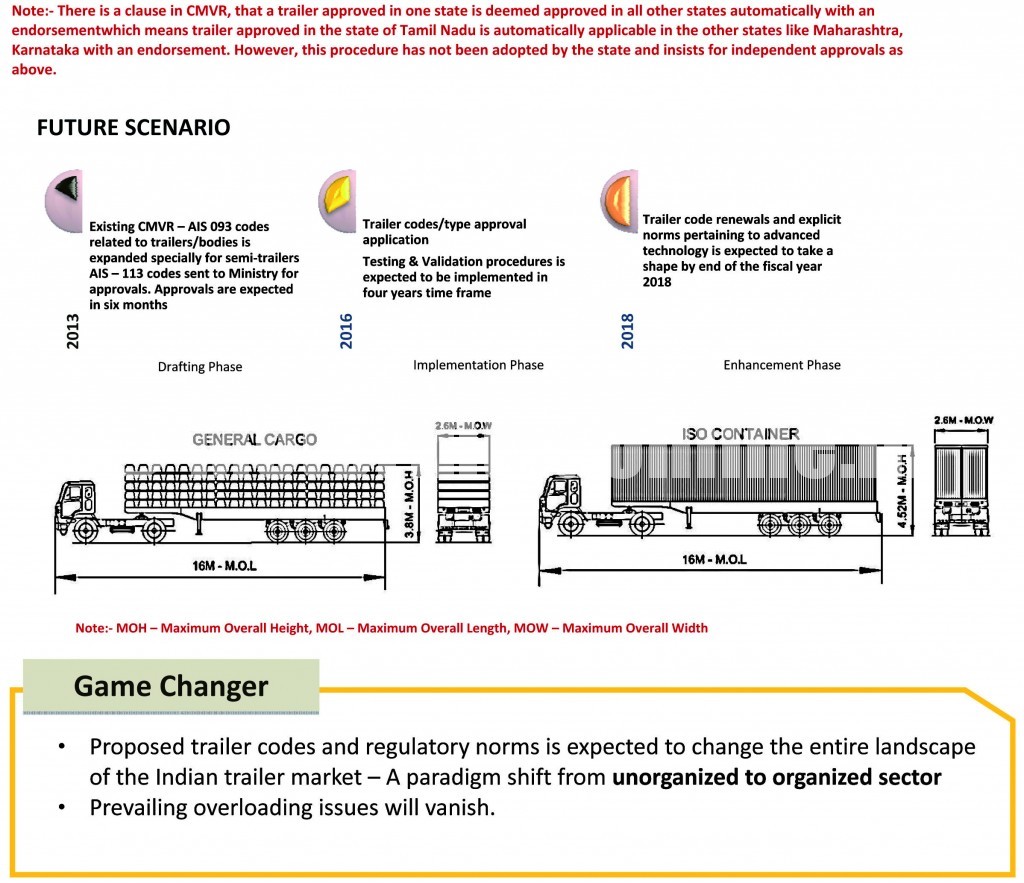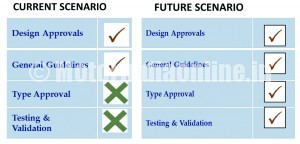By RACE Innovations

The Indian application industry enggaed in body building for trucks, tippers and trailers is currently worth more than Rs. 100 billion, with a projected growth of 6-7 per cent CAGR over the next five years. But this potential area is not receiving the attention needed. Hence it remains in a more unorganized form. Even then certain developments related to truck, tipper and trailer body codes are taking place, though not to the desired extent.
The Indian commercial vehicle industry is heading towards application-centric customized solutions market in the form of fully-built vehicles (FBVs). But this requires a clearer understanding specific to regions, loads carried, road infrastructure, terrain condition, load handling facilities, load securing methods, cultural and traditional practices, return load utilities, etc.

Today’s application builders have been encouraged to build bodies and trailers to suit region-specific operational needs which confine their growth to specific regions. On the other hand, vehicle OEMs and body or applications builders (BOEMs) are gearing up to address the products specific to each and every individual customer. This, in turn, makes product development complex, and managing the product lines is not going to be easy in the long term and will not add any significant value to future technology.
“In the developed markets, this is not the case. There detailed and exhaustive market research and customer surveys specific to each application are conducted before conceiving a product, and the said product will have the key target features translating to profits and value to customers (best operating economics and utility). This methodology of operation can aid both application builders and vehicle OEMs to focus their energy and costs in developing the right product for the market with longer sustained continual volumes”, states Mr. Rajesh Khanna, COO, RACE Innovations Pvt. Ltd.

In most cases, each and every product developed by BOEMs is specific to every customer, and there is need for a methodology that can group the customer voices and develop a product specific to a market or an application. The use of techniques like quality functional deployment (QFD) which helps transform customer needs into engineering characteristics and appropriate test methods for a product or service while simultaneously setting development targets is essential.

Application engineering
The Indian market is witnessing an enormous change in the chassis and drive line engineering, and targets are clearly set to meet global standards. However, application products like tippers, trailers, truck bodies and cabins are nowhere closer to any global benchmarks. Also this is seriously affecting the chassis and driveline improvements made so far.
The application industry is expected to undergo a major change in the next decade, and skilled application engineers with clear market understanding will prove to be great assets. RACE recruits fresh engineering graduates, equips them with critical market knowledge to understand the applications and train them to develop products specific to each market.
“The design process and methodology, development gates like QFD, detailed production drawings in 2D & 3D, techniques like FEA, DFMEA, prototyping, homologation, testing, etc., are not being followed in the application manufacturing (or body building) industry. It is very essential that application builders and their aggregate suppliers follow the design and development processes similar to the chassis and drive live engineering”, said Mr. P. Muthu Krishnan, Chief Mentor – Design & Engineering, RACE.
As there is no systematic development process, and even OEMs are depending on the unorganized BOEMs for information, the application industry has not had any innovations in the last one decade. Very few players have used high-tensile steel for realizing light weight tippers, trailers and bodies (less unladen weight). At the same time, there have not been any changes in trailer designs.

Infrastructure for design verification, validation
Today majority of the trailers, truck bodies and tippers in India are being manufactured with fabricated/welded structure design which is easy to manufacture without any control in the material, welding quality and processes. The current range of products developed by application builders offers scope to design the trailer chassis and bodies with high grade material built through different processes. By the above method, the weight of trailer bodies can be reduced and the payload increased to achieve economical operation.
In the current scenario, application builders are not motivated to validate their designs owing to the fact that homologation currently is neither mandatory nor a routine practice, and it isn’t covered in the price. Also, the practice with V-OEMs for their FBV development has been to regularize the products developed by application builders with no clear design verification process in place.

Design Verification Process
• In order to check the designs, Finite Element Analysis (FEA) can be done theoretically to arrive at the required level of material utilization.
• Before finalizing the configurations of the vehicle and design sign-off for production, it is very important and essential to put one or two vehicles on testing and build up confidence in operation.
• One method of testing is to put the vehicle on dynamometer and test it with controlled parameters. This requires high investment on the testing infrastructure but the test results are produced in a very short time.
• Another method of testing is to put the vehicle in the field with 25% more than the legal payload and run for a minimum period of 6 month/50,000 kms on different terrains like highways, cross country, hilly terrains and sandy roads, wetlands, etc. (Recommended regions Rajasthan, Himachal Pradesh, Bihar, Kerala & Andhra Pradesh). This method is both cost intensive and requires a lot of time for testing.
• RACE is actively involved with accredited Testing agencies to establish testing facilities for the future.
Regulatory requirements, implementation
The Indian application industry has not had a stricter regulatory norm till date. So far it has not even been subjected to the norms and regulations related to chassis development. Currently trailer regulations and approval are limited to Regional Transport Officers’ discretion in each State. It is not yet clear whether any regulations will be enacted in the near future, since there is already some resistance to the move from the unorganized manufacturers. A new regulation might negatively affect the employment opportunity and the investments they have already made or are planning to make.
“As an end user, I will be happy to see some regulations in place as this will improve the overall efficiency, quality and reliability of the trailers manufactured”, opined Mr. Ashok Chaudhary, Managing Director, Sonu Cargo Movers Pvt. Ltd., one of the leading logistics service providers in India.
BOEMs association
Currently in India there is no major body to represent and address the concerns of trailer manufacturers and truck/bus body builders. Also there is lack of infrastructure in terms of technology, testing methodology and statutory regulations/approvals.
However, there is growing concern for safety across the value chain as the industry is still revolving round unorganized manufacturers with no initiatives. One of the main reasons is that the cost of creation of this kind of infrastructure is going to be quite high. It is also difficult to be done by one company alone. The only option for a developing country like India in the current situation would be to have a common infrastructure which can prove economical.
In this pursuit, RACE has initiated an organization called the Society of Indian Truck & Bus Application Manufacturers (SITBAM) intending to bring the entire Indian trailer and bus/truck body builders on a single platform. “The Society aims at developing a distinctive single panel system, seamlessly integrating all application manufacturers in order to represent their issues and arriving at possible solutions through sharing of pertinent information”, states Mr. Ranjit David, Head – Strategic Planning, RACE.